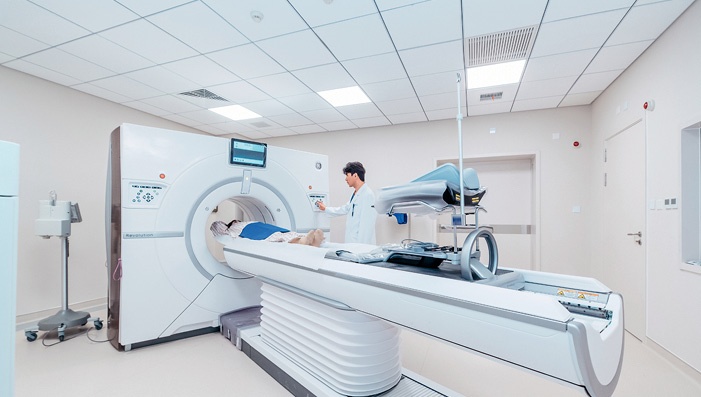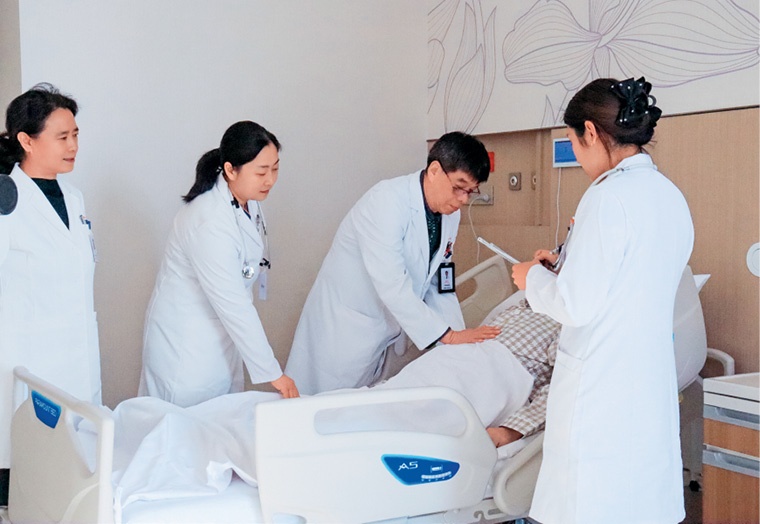
The Perennial General Hospital is China’s first wholly foreign-owned grade III general hospital.
On October 3, 1990, the People’s Republic of China and Singapore established their diplomatic relations, and 2025 marks the 35th anniversary of the event. This makes it especially fitting that China’s first wholly foreign-owned grade III general hospital, the Perennial General Hospital, which opened in Beijing’s neighboring city Tianjin on February 26, is owned by Singaporean company Perennial Holdings Private Limited.
Perennial focuses on healthcare and high-speed railway and its healthcare business includes hospitals and medical centers, management of healthcare complexes, and comprehensive elderly care services.
“Perennial has long been optimistic about the Chinese market and has been planning its medical venture for a long time,” said Liu Dan, president of the Perennial General Hospital in Tianjin.
But being a pioneer was not an easy task. For just one approval process, competent government departments had to conduct multiple tests to ensure compliance.
For example, for business registration, there was no option for wholly foreign-owned hospitals in the previous approval system. So, the business approval catalog had to be updated, which took two days. But the changes have “paved a new path for wholly foreign-owned hospitals, creating a completely new and comprehensive service chain,” Liu said.
With Perennial’s pathbreaking entry, Liu thinks in the future more foreign medical service providers will emerge in the Chinese market, promoting a healthcare market with international standards.
“We look forward to China maintaining an open policy, strengthening the regulatory guidance for foreign-funded hospitals, promoting in-depth cooperation and exchange between foreign and local hospitals, and jointly advancing high-quality development of the medical industry,” he said.

A patient undergoes CT scanning at the Perennial General Hospital.
Phased Policy Relaxations
Hospitals were among the strictly regulated sectors in the past, with relaxations announced in phases.
In the 1980s, as a major component of opening up to the outside world, China began to allow Sino-foreign joint ventures in the medical sector, and made multiple policy adjustments subsequently. In July 2024, the Third Plenary Session of the 20th Central Committee of the Communist Party of China proposed opening up the medical sector further in an orderly way.
In September 2024, it was announced that wholly foreign-owned hospitals would be allowed in select cities – Beijing, Tianjin, Shanghai, Nanjing, Suzhou, Fuzhou, Guangzhou and Shenzhen, and in all of Hainan Province, except hospitals practicing traditional Chinese medicine.
According to Zhu Fengmei, an associate researcher at the Institute of Economics of the Chinese Academy of Social Sciences (CASS), prior to this, there were around 300 medical facilities in China with foreign investment, most of them small in scale, with 20 to 200 beds. The foreign-funded medical facilities generally concentrated their services on ophthalmology, dentistry, gynecology and pediatrics in economically developed areas.
The recent expansion is beneficial, introducing high-level international medical resources and enriching the domestic medical service supply, said Zhu. Perennial is a 500-bed hospital with a total investment of about RMB one billion.
But to expand openness, development must be coordinated with security. According to a working plan for expanding the opening up of the sector for wholly foreign-owned hospitals on a trial basis, there are clear restrictions on the categories of hospitals, diagnosis and treatment, and other matters related to genetic safety and medical ethics.
Zhu said that the regulatory system needs to be improved. Maintaining a balance between the introduction of foreign investment and issues such as data security and market order still requires refinement and elaboration.
“In the process of relaxing the restrictions on foreign investment, it is also necessary to ensure fairness in market competition,” she said. “The market’s role in the allocation of medical resources should be given full play.”
Liu Hongkui, an associate research fellow at the Institute of Economics of the CASS, has a warning, too. According to him, China’s domestic enterprises are growing rapidly, and some are at the forefront of many fields in the world. The competition in the Chinese market is becoming increasingly fierce, and production cost is also rising. Only high-quality foreign-funded enterprises can survive and earn profits, he said.

A medical team on a routine ward round in the Perennial General Hospital.
Still an Investment Magnet
The pace of China’s opening up has never ceased since reform and opening up started in 1978. The amount of foreign capital in actual use was RMB 826.25 billion in 2024, a year-on-year decrease of 27.1 percent. It made people question if China had lost its attractiveness to foreign investment.
Liu Hongkui said there were many reasons for the decline in investment. The overall global cross-border investment was sluggish. With the U.S. hiking its interest rate, a significant amount of capital flew into the U.S. The uncertainty in China-U.S. trade relations also had an impact, he said.
He pointed out that although the amount of foreign investment decreased, the number of newly established foreign-funded enterprises increased by 9.9 percent year on year. Besides, in the past, foreign investments mostly went to capital-intensive industries like manufacturing. But now, they are flowing into the service sector and hi-tech industries, which require relatively less capital. “This means the foreign investment structure is being optimized,” he said.
The large market of 1.4 billion people still holds extraordinary appeal for foreign investors. “The demand for medical services in China is significant, presenting considerable investment opportunities. Certain sectors of the medical service industry require substantial investments, such as building new hospitals, buying medical equipment, and training healthcare professionals. Prospects for foreign investment in these sectors are promising,” he explained.
“China’s economy is stable. It boasts many advantages, strong resilience and great potential for long-term improvement. The fundamental conditions and basic trends supporting China’s sustainable economic development have not changed,” said Ling Ji, vice minister of commerce and deputy China international trade representative.
“China’s super-large market, complete and efficient industrial and supply chain system, and enabling environment for innovation all provide favorable conditions for multinational companies to invest in China,” Ling said.
Attracting and utilizing foreign investment has always been a major component of China's basic national policy of opening up to the outside world. China has allowed the establishment of Sino-foreign joint ventures and cooperative medical institutions since 1989, with multiple adjustments thereafter. On November 29, 2024, the National Health Commission and three other government departments announced a detailed work plan for setting up wholly foreign-invested hospitals in the nine cities.
Both the 2023 and 2024 Central Economic Work Conferences discussed investment. While the former proposed to increase effective investment and form a virtuous cycle of mutual promotion between consumption and investment, the latter listed vigorously boosting consumption, improving investment efficiency, and comprehensively expanding domestic demand as the top priority tasks for 2025.
China’s health industry is booming, with the market value expected to hit RMB nine trillion in 2024, according to the Health Industry Consumption Trend Development Report released by China Consumers Association.
According to Zhu Fengmei, attracting foreign investment to establish medical facilities is a major move to stimulate consumption of health services. Consumption and investment can drive each other, work in synergy, and promote rapid economic recovery and development, she said.
With the increase in income levels, a larger population has developed higher and more diverse demands for medical services, and foreign-funded hospitals have become a beneficial complement to public hospitals.